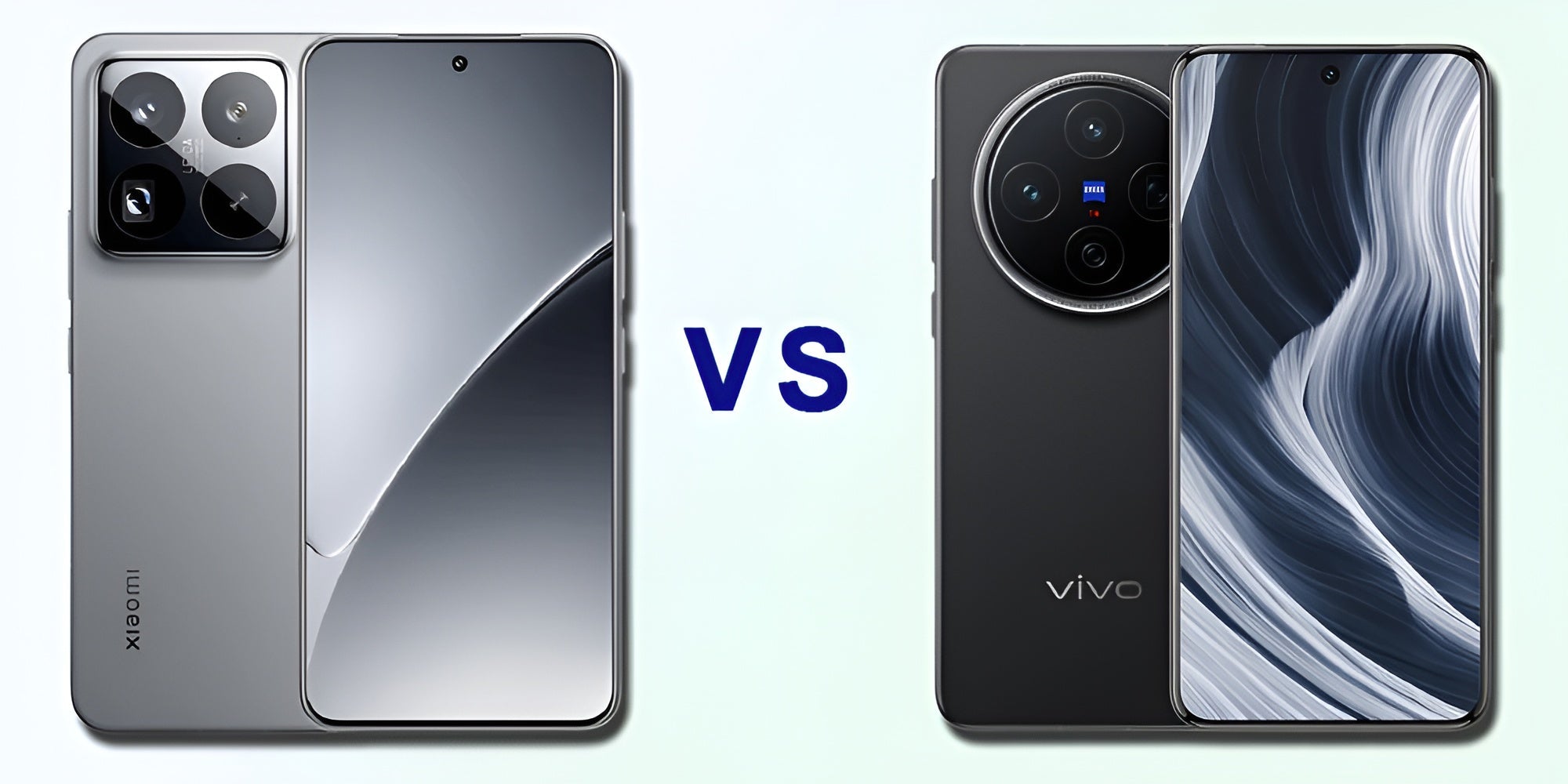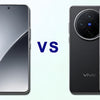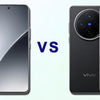Xiaomi 15 vs Vivo X200 Pro: What is the difference?

Introduction
Choosing between the Vivo X200 Pro and the Xiaomi 15 can feel like splitting hairs: both are flagship-class phones with top-tier displays, cameras and performance. This guide breaks down the key differences you should care about in India — design, display, performance, cameras, battery & charging, software, pricing and value — so you can pick the one that fits how you actually use a phone.
Features
-
Cameras: Vivo markets a camera-first experience with a very large sensor and Zeiss tuning, including a 200MP sensor on some X200 Pro variants; Xiaomi 15 focuses on balanced Leica-tuned imaging with a high-quality 50MP main sensor and a compact flagship form factor.
-
Processor & performance: Xiaomi 15 uses Qualcomm’s Snapdragon 8 Elite (top-tier Qualcomm platform) while the Vivo X200 Pro uses MediaTek’s Dimensity 9400 (a very capable 3nm SoC). Each targets energy-efficient performance but with different strengths in sustained loads and raw single-core bursts.
-
Battery & charging: Vivo X200 Pro pushes huge battery capacity 6000 mAh with fast wired charging; Xiaomi 15 has a smaller battery 5240 mAh but leans on efficient silicon and display tech. If huge endurance is a priority, Vivo tends to win.
-
Display & size: Xiaomi 15 is lighter and more compact (easy one-hand use) with an extremely bright, calibrated M9 panel; Vivo X200 Pro is larger with a very bright LTPO panel tuned with ZEISS color science for photography editing.
Design & ergonomics
Xiaomi 15 aims for a compact, premium feel — slim bezels, aluminum frame and a lighter overall weight (around ~191g on official specs). That makes it comfortable for long-hand use and pocket-friendly. Vivo X200 Pro goes for a more imposing stance: larger footprint and heavier (depending on the variant), but with a camera module and finish that telegraphs “photo-first flagship.” If you prefer compact phones, Xiaomi 15 is the pick; if you like a big-screen media and camera canvas, Vivo is attractive.
Display: brightness, refresh and color
Both phones use high-end AMOLED panels with adaptive refresh:
-
Xiaomi 15 uses Xiaomi’s M9 panel with extremely high peak brightness (Xiaomi quotes up to ~3200 nits in spots) and ultra-thin bezels. That makes it brilliant outdoors and great for HDR content.
-
Vivo X200 Pro offers a ZEISS-calibrated LTPO AMOLED with very high peak brightness (often quoted near 4500 nits in marketing) and flexible refresh rates down to 0.1Hz for battery savings. This display is tuned for color accuracy and photo editing.
If you consume HDR content outdoors a lot, Xiaomi’s panel brightness is a huge plus. If you edit photos on the phone and want natural color, Vivo’s ZEISS tuning is compelling.
Performance: chipset, gaming and thermals
-
Xiaomi 15 ships with Qualcomm’s Snapdragon 8 Elite (also called 8 Gen Elite in some marketing) — excellent single-core and GPU performance, strong AI capabilities and good efficiency. It’s one of the best SoCs for raw mobile performance.
-
Vivo X200 Pro uses MediaTek Dimensity 9400 (3nm) — strong multi-core performance, great thermal/power balance and often better price/perf for certain workloads. Both chipsets are flagship-class; differences show up in synthetic benchmarks, thermals under sustained gaming and platform-specific optimizations.
In day-to-day use both phones are snappy. If you care about peak GPU performance and wide compatibility with high-end games and emulators, Qualcomm’s GPU generally leads, but the Dimensity 9400 is no slouch and can deliver similar real-world experience.
Cameras: hardware and real-world photography
This is where the narrative diverges:
-
Vivo X200 Pro pushes large imaging hardware (Vivo’s marketing highlights ZEISS tuning and very large sensors — global spec sheets show configurations including very high megapixel/telephoto sensors). Vivo focuses on photography versatility and high-resolution capture.
-
Xiaomi 15 pairs Leica optical tuning with a high-quality 50MP Light Fusion 900 sensor (1/1.31" style) and a dedicated 60mm telephoto module. Xiaomi emphasizes color science, 10-bit log recording and strong video features (8K, multi-mic capture). In short: Xiaomi aims for a balanced, reliable camera system tuned for natural output; Vivo goes for high-resolution flexibility and Zeiss color character.
Real-world result: for everyday snaps both produce excellent photos; if you want extreme zoom or very large prints from the main sensor, Vivo’s higher-megapixel strategy can help. For natural color, stable video and a compact imaging package, Xiaomi 15 is excellent.
Battery life & charging
-
Vivo X200 Pro: notably large battery (about 6000 mAh on many global models) and fast 90W wired charging in several variants — ideal if you prioritise long runtime and fast top-ups.
-
Xiaomi 15: smaller battery (Xiaomi lists around 5240 mAh for some 15 models) but combined with Snapdragon 8 Elite efficiencies and Xiaomi’s display tuning yields very good endurance; charging speeds are fast but Xiaomi sometimes balances between wired/wireless depending on the model.
If you’re a power user who needs two-day battery life without charging, Vivo’s larger battery is an advantage. If you prefer a compact phone with very good single-day battery and rapid charging, Xiaomi remains solid.
Software & features
-
Xiaomi 15 runs HyperOS (Xiaomi’s modern Android skin) with Leica and HyperAI camera features, plus regular updates on flagship models. Xiaomi leans into ecosystem features and AI enhancements.
-
Vivo X200 Pro runs Vivo’s Funtouch/OriginOS variants (region-dependent). Vivo focuses on camera apps and imaging tools, and often includes ZEISS photo modes and special video recording features.
Both offer modern Android builds with manufacturer overlays — update cadences vary by brand and region. If software updates are a high priority, check current update policies in India for each model at purchase time.
Which should you buy? — Practical recommendations
Buy Xiaomi 15 if you want:
-
A compact, premium-feeling phone that’s easy to use one-handed.
-
Top-tier Qualcomm performance (Snapdragon 8 Elite).
-
Leica-tuned colors and balanced camera/video capabilities.
-
A very bright display for outdoor HDR use.
Buy Vivo X200 Pro if you want:
- Maximum battery life and tremendous endurance (large 6,000 mAh variants).
- A camera system built around high-resolution sensors and ZEISS tuning (great for creative photography, large crops).
- A bigger canvas for media and photo editing.
If possible, try both in a store to judge ergonomics, camera output and UI preferences — hands-on use often makes the decision obvious.
Final word
Both phones are excellent flagships but with different emphases: Xiaomi 15 leans compact, performance-oriented and Leica-balanced; Vivo X200 Pro leans camera-first with massive battery life and ZEISS tuning. Pick Xiaomi if you want the compact Snapdragon flagship experience; pick Vivo if long battery life and a high-resolution camera system are your priorities.
FAQs
Q.1. Which phone has better battery life — Vivo X200 Pro or Xiaomi 15?
Vivo X200 Pro (with its ~6000 mAh variant) generally offers longer battery life; Xiaomi 15 is efficient but smaller in capacity.
Q.2. Which has the better camera for everyday photos?
Both are excellent; Xiaomi 15 gives balanced, natural Leica-tuned output, while Vivo X200 Pro focuses on high-resolution flexibility with ZEISS tuning.
Q.3. Which is better for gaming?
Xiaomi 15’s Snapdragon 8 Elite tends to lead in raw GPU performance, but Vivo’s Dimensity 9400 is competitive and can deliver similar real-world gaming experience.
Q.4. Are both available in India?
Yes, Both are available.
Q.5. Which phone holds value better for resale?
Resale depends on brand, demand and condition; historically, Xiaomi flagships retain decent value due to broad demand, but camera-first flagships like Vivo can hold niche appeal—resale trends vary by region and time.





